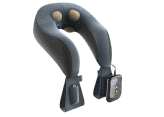Eating for Energy: How a Balanced Diet Helps Keep You Moving
In addition to giving the body the tools it needs to fight pain, a healthy diet can help to promote weight loss and lead to a healthier, happier lifestyle. Understandably, managing pain is often more difficult when the body is inflamed, overweight, nutrient-deficient and fatigued. This is why maintaining a healthy diet where you are eating for energy every day can be extremely beneficial for chronic pain sufferers. A healthy diet can help to boost and maintain energy levels which is essential to keeping weight off while staying positive and motivated throughout the day.
You may already know of the benefits that come from a healthy diet, but what’s more important is understanding what exactly you should be consuming regularly to provide your body with the proper nutrients, vitamins and energy needed each day to stay healthy and help manage your pain.
Eating for Energy: Fueling a Healthy Pain-Free Lifestyle
The body needs fuel to function, and eating a well-balanced, anti-inflammatory, healthy diet is the best way to provide your body with the energy it needs to function properly, sustain itself throughout the day and fight back against pain.
A healthy diet consists of consuming foods that include:
- Complex Carbohydrates
- Protein
- Healthy Fats
- Anti-Oxidant Foods
- Omega 3’s
- Water

Complex Carbohydrates
There is often a negative connotation when it comes to eating carbs, which often results in people trying to cut them out entirely to help with weight loss. However, the body needs carbs in order to function properly. Carbs are quickly converted into glucose and used for energy making them the body’s preferred source of fuel.
There are two types of carbs:
Simple Carbs: contain one or two sugars and are usually found in fruits or milk products. They can also be found in candy, soda and syrups, but these simple carbs are made up of refined sugars and are referred to as “empty calories.”
Complex Carbs: consist of three or more sugars and come from starchy foods like beans, lentils, peanuts or whole-grain bread that contain vitamins, minerals and fibre.
Both simple and complex carbs are converted into sources of energy in the body, however, simple carbs go through energy much more quickly, while complex carbs provide the body with sustained energy.
Without sufficient fuel and/or glucose the body lacks energy and the nervous system suffers which is why complex carbs are important to include in a well-balanced diet. Complex carbs are both high in nutrients, contain antioxidants and provide energy to last throughout the day helping manage chronic pain.

Protein
The body requires eight essential amino acids, that come from protein-heavy foods in order to function properly. These amino acid compounds are known to be critical for pain relief. When consuming protein, amino acids enter the bloodstream from the intestines and circulate throughout the entire body to organs like the liver and brain.
It is recommended to eat some form of protein along with a complex carbohydrate with each meal as the combination of the two prevents a rise in insulin, storage of any excess fat and prevents possible pain flare-ups. Protein dense foods are also known to increase energy levels while decreasing inflammation in the body. These foods include:
- Lean meat, poultry and fish
- Eggs
- Milk, yogurt or cheese
- Seeds and nuts
- Beans and legumes
- Tofu

Healthy Fats
There is often a misconception that if we want to be healthy and/or lose weight, we shouldn’t consume fats. However, there’s a difference between good, healthy fats and bad fats. The body needs healthy fats in order to absorb vitamins and promote heart and brain health. Whereas bad fats include artificial trans fats and saturated fats that encourage weight gain and fatigue. Everything in moderation is key to consuming fats. Including a small portion of healthy fats, along with a protein and complex carbohydrates you will set yourself up with the foundation for a healthy and energized meal.
Healthy fats can be divided into two categories:
Monounsaturated Fats:
- Olive, Canola, Peanut or Sesame Oils
- Avocados
- Olives
- Nuts
- Peanut Butter
Polyunsaturated Fat
- Sunflower, Sesame, Pumpkin, Flax Seeds
- Walnuts
- Fish
- Soybean, Sunflower Oil

Omega-3’s
Although not necessarily in its own food group, Omega 3’s are a type of polyunsaturated fats that are extremely beneficial for your health. Not only do they target chronic pain like arthritis, joint pain and inflammatory issues, but they also help battle fatigue, sharpen memory and balance your mood. Some of these foods include:
- Fish
- Eggs
- Seeds
- Kale
- Spinach

Antioxidants
Antioxidants are molecules that fight off harmful compounds in the body. Naturally, your body has its own antioxidants, however, there are certain foods high in antioxidants that can play a crucial role in maintaining the proper functioning of your immune system. Consuming a certain amount of antioxidants throughout the day can help manage chronic pain and help maintain a healthy lifestyle overall. Antioxidants are mostly found in Vitamin C and Vitamin E heavy foods, but also colourful fruits and vegetables. These foods include:
- Prunes, apples, raisins, plums, grapes, onions
- Vitamin C: Berries, broccoli, Brussel sprouts, kale, oranges peppers
- Vitamin E: Broccoli, avocado, nuts, red peppers, seeds
Water
Water is the main component of our blood and is essential to carrying nutrients and vitamins to the cells and throughout the body. Because our bodies require water to function, a lack of water can cause dehydration side effects like feelings of fatigue, headaches and low energy levels.
That’s why it’s important to ensure you are drinking 8-10 glasses of water per day to keep the body regulated and free of toxins as water can help prevent inflammation, promote weight loss and help stabilize energy levels.

Eating for Energy Can Help You Live Pain-Free
Understanding the foods to eat in order to maintain a healthy diet is important for managing chronic pain as a healthy diet can help increase energy levels, maintain or lose weight and help decrease inflammation in the body. And while a healthy, well-balanced diet won’t cure chronic pain symptoms on its own, it is an essential component of a pain-free lifestyle.
Sources
- Healthline, Antioxidants Explained in Simple Terms
- Practical Pain Management, A Diet For Patients with Chronic Pain
- US News, What Makes a Healthy Diet?
- Harvard Health Publishing, Eating to boost energy
- Very Well Health, Stop Chronic Pain by Changing What’s on Your Plate
- Medical News Today, What are the benefits of eating healthy?
- Web M.D, Eat to Boost Your Energy
- Help Guide, Choosing Healthy Fats
- Better Health, Protein
Learn more about Diet, Exercise & Sleep on the DR-HO'S Blog
A Guide to Relieving & Managing Chronic Pain at Home
6 Foods That Target Inflammation
Can Yoga Help With Lower Back Pain?
The Healing Benefits of Tai Chi
Can Chronic Pain Lead to Depression and Anxiety?
7 Ways to Stay Active and Healthy in Cold Weather
How to Work Out With Chronic Pain and Prevent Injury
Foods to Eat and Foods to Avoid to Sleep Better All Night
5 Lower Back Pain Relief Stretches & Simple Yoga Moves
















